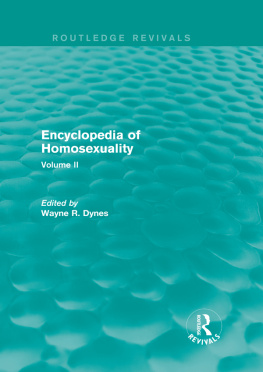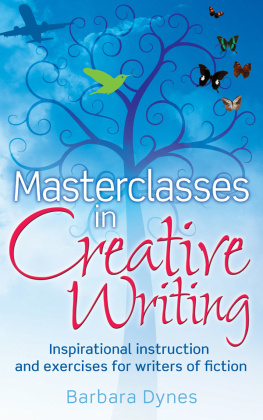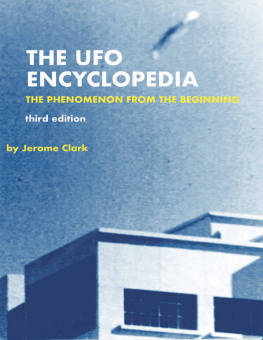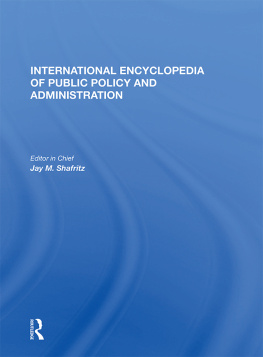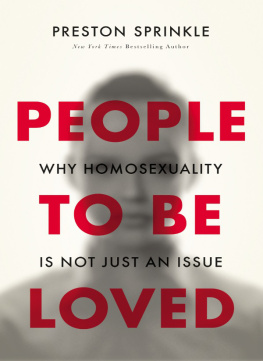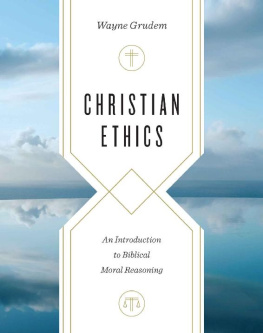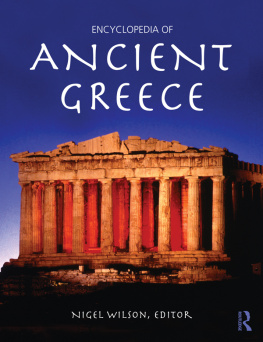Dynes Wayne R. - Encyclopedia of homosexuality. Volume II
Here you can read online Dynes Wayne R. - Encyclopedia of homosexuality. Volume II full text of the book (entire story) in english for free. Download pdf and epub, get meaning, cover and reviews about this ebook. City: Abingdon;Oxon, year: 2016, publisher: Taylor & Francis (CAM);Routledge, genre: Romance novel. Description of the work, (preface) as well as reviews are available. Best literature library LitArk.com created for fans of good reading and offers a wide selection of genres:
Romance novel
Science fiction
Adventure
Detective
Science
History
Home and family
Prose
Art
Politics
Computer
Non-fiction
Religion
Business
Children
Humor
Choose a favorite category and find really read worthwhile books. Enjoy immersion in the world of imagination, feel the emotions of the characters or learn something new for yourself, make an fascinating discovery.
- Book:Encyclopedia of homosexuality. Volume II
- Author:
- Publisher:Taylor & Francis (CAM);Routledge
- Genre:
- Year:2016
- City:Abingdon;Oxon
- Rating:5 / 5
- Favourites:Add to favourites
- Your mark:
- 100
- 1
- 2
- 3
- 4
- 5
Encyclopedia of homosexuality. Volume II: summary, description and annotation
We offer to read an annotation, description, summary or preface (depends on what the author of the book "Encyclopedia of homosexuality. Volume II" wrote himself). If you haven't found the necessary information about the book — write in the comments, we will try to find it.
Encyclopedia of homosexuality. Volume II — read online for free the complete book (whole text) full work
Below is the text of the book, divided by pages. System saving the place of the last page read, allows you to conveniently read the book "Encyclopedia of homosexuality. Volume II" online for free, without having to search again every time where you left off. Put a bookmark, and you can go to the page where you finished reading at any time.
Font size:
Interval:
Bookmark:
Ancient Greek Sparta was the chief city-state of the Peloponnesus in the archaic and classical ages. Inspired by the Dorian ancestral hero Heracles, who loved Iolaus and taught him to hunt and fight, Spartans developed the strongest Hellenic society under the Eunomia (good order), laws given by an oracle to the semi-mythical regent Lycurgus, but actually promulgated just after the Second Messenian War. Victorious under its peculiar constitution that early provided for two hereditary kings but evolved during the First (735715 B.C. ) and Second (635615 B.C. ) Messenian Wars, Sparta enslaved its neighbors, assigning a certain number of these helots to work the 9,000 cleroi (plots of land), each assigned to a Spartan. Thus relieved of work, each male citizen devoted his days from six to sixty to gymnastics and military training to become a perfect hoplite, as the newstyle warrior for the phalanx was called.
Pederasty . The semilegendary Lycurgus banned money except for iron spits and ordered periodic redistribution of cleroi. Faced with the need to limit the population of equals so that each would possess a cleros, the reformers after 615 B.C . imported the Cretan customs of de layed marriages for men, training nude in gymnasia , common messes for citizens, and pederasty . Provided only with one rude cloak annually, boys roved in herds ( agelai ), as in Crete , each under an older boyan eiren of 2022slept outdoors, stole food from helots and harassed and even murdered them. If caught stealing they were flogged publicly, not infrequently to death in order to teach them to steal more craftily and to endure greater physical hardship. At 12 each boy was taken by a 22-year-old inspirer, who trained him for the next eight years. Then, as the listener began to sprout facial and body hair, he went on active fulltime military duty and was assigned to a barracks where he had to sleep until he was 30, continuing to return to dine with his messmates until the age of 60. At 30 the inspirer married a girl of 18, who on her wedding night lay face down in a dark room in boys attire with close-cropped hair, and henceforth he slept at home. Eighteen- to 20-year-old ephebes and 20-to 22-year-old eirens, being constantly together, made the transition from listeners to inspirers.
That Lycurgus borrowed Cretan institutions is attested not only by Ephorus, Herodotus, Plato , and Plutarch , who state that he traveled in Crete to study its constitution, but also by the fact that common messes in Sparta were at first called by the Cretan term andreia (mens house) before it became the classical syssitia . The Spartan gymnasia and palestra, from which, as in Crete, helots were excluded and citizens trained nude, were modeled on Cretan dromoi, running tracks. Also Thaletas, the Cretan musician (devotee of the Muses, hence poet and scholar) and disciple of the Cretan Onomacritus, who had institutionalized pederasty on Crete ca. 650, came at Lycurgus request to help improve the Spartan constitution and introduced there from Crete the Dance of the Naked Youths. After institutionalizing pederasty and the related reforms, neither Sparta nor Crete sent out any colonists, unlike the other poleis .
The Spartan Apogee . After implementing the eunomia, Spartans became the greatest warriors and athletes in Greece. Their earlier poets, like Tyrtaeus (fl. ca. 630), had not described pederasty (nor had any other earlier surviving authors) but afterwards other Greeks, except those in the most backward areas such as Macedonia, quickly adapted Spartan institutions though in a less severe form. Solon , for example, with the help of the Cretan musician Epimenides, institutionalized pederasty in Athens.
All famous Spartans personally practiced pederasty, but much debate raged in antiquity as in modem times over whether inspirers physically loved their boys. Defenders of the so-called pure Dorian form (because Cretans and Spartans were the most famous branch of the Dorians, they and other modem scholars assumed pederasty to be a prehistoric institution common to the Dorian race) of pederasty range from Xenophon to Karl Otfried Muller (17971840) and the contemporary Harald Patzer. The majority, however, adhere to the skepticism of Cicero: Only a thin veil [the tunic separating the lovers who reclined side by side on a couch at symposia ] preserves their virtue ( De Republica IV, 4). Many charged the Spartans with homosexual and/or even heterosexual promiscuity because Spartans secluded their women far less than did other Greeks, even letting them exercise nude in public as the males did and not marrying them until they were 18 whereas most other Greeks of 30 took brides of 15. Aristotle accused the Spartans, like the Celts and other warlike races, of being dominated by their women and given to pederasty. Alemans Partheneia indicates that corerasty (love of maidens) was practiced between women and girls, both classes of the population less restricted than elsewhere and, according to Aristotle, women owned twofifths of the property in Sparta as a result of inheritance from warriors slain in its constant wars.
As the Spartans heroically led in repelling the Persians in 480479 B.C. , their reputation soared. Even at their maritime rival Athens, a pro-Laconian, anti-democratic party, mainly composed of aristocrats, existed during the bitter Peloponnesian War (431404 B.C. ), pitting Spartas Peloponnesian League against Athens Delian League. Socrates most famous pupils allied en masse with him in praise of Sparta: Alcibiades , Critias, who had headed the Thirty Tyrants installed by the Spartans after their victory to control Athens, Plato, and Xenophon. This factor plus his questioning the wisdom of the war and the existence of the gods led an Athenian jury to condemn Socrates to death.
Decline . After Spartas victory, its commanders and harmosts (governors) often became corrupt, taking bribes and ravishing boys in the territories they controlled. Great inequality of wealth resulted from such plunder as well as from inheritances and many unable to contribute as required to syssitia lost their status as equals. At battles in 371 and 362 B.C. Thebans led by the Sacred Band of lovers organized by Epaminondas overthrew Spartan hegemony and liberated Messenia, slaying so many Spartan warriors that the city never fully recovered, hampered, some say, by a low birth rate caused by pederasty. Two pederastic kings, Agis III (244241 B.C. ) and Cleomenes DI (235219 B.C. ), revived the old constitution, redistributing wealth and restoring discipline, but they were defeated by the Romans, in alliance with the Achaean League, in 222 B.C.
Conclusion . The Spartan system of education discouraged intellectual development and fostered Laconic brevity of speech. But when the mercantile societies of Ionia, the Aegean Islands, and Athens, following Spartas lead, copied and intellectualized pederasty, it became the driving force of the Greek miracle. Each boy eromenos had as a distinguished private tutor his erastes or lover.
Sparta was to the Greeks themselves and remains the eternal model of an aristocratic warrior society whose unwritten law combined male bonding with an especially virile, austere form of homosexuality. Neglecting the cultural endeavor that was the particular glory of Athens, Sparta nonetheless made its own contribution to the Greek miracle. Inspired by man-boy love, the heroism of Spartan warriors shielded nascent Hellenic civilization from the menace of Persian despotism.
See also Greece, Ancient .
BIBLIOGRAPHY. Paul Cartledge, The Politics of Spartan Pederasty, Proceedings of the Cambridge Philological Society , 207(1981), 1736; idem, Agesilaos and the Crisis of Sparta , London: Duckworth, 1987; Elizabeth Rawson, The Spartan Tradition in European Thought , Oxford: Clarendon Press, 1969.
William A. Percy
Font size:
Interval:
Bookmark:
Similar books «Encyclopedia of homosexuality. Volume II»
Look at similar books to Encyclopedia of homosexuality. Volume II. We have selected literature similar in name and meaning in the hope of providing readers with more options to find new, interesting, not yet read works.
Discussion, reviews of the book Encyclopedia of homosexuality. Volume II and just readers' own opinions. Leave your comments, write what you think about the work, its meaning or the main characters. Specify what exactly you liked and what you didn't like, and why you think so.

